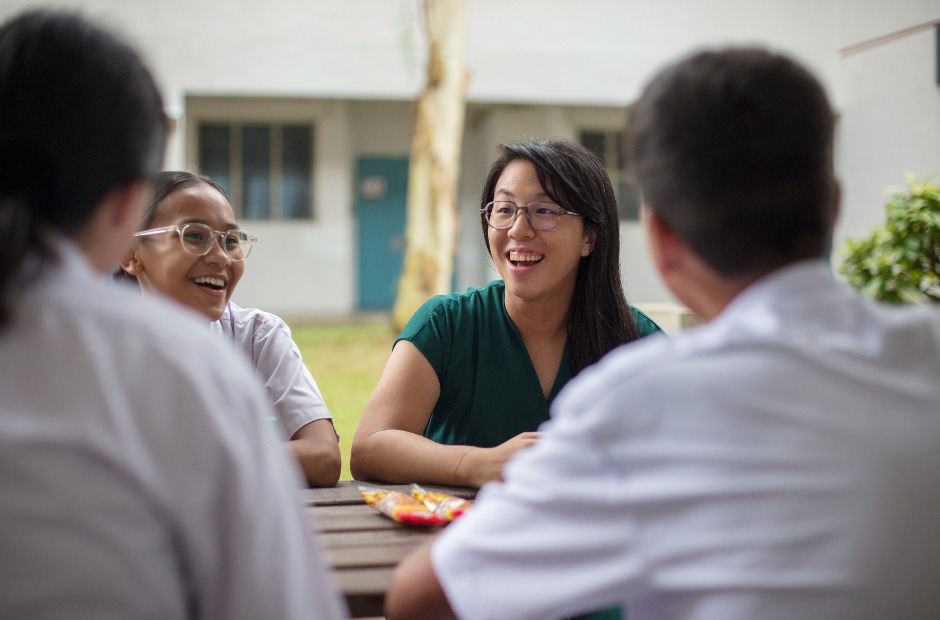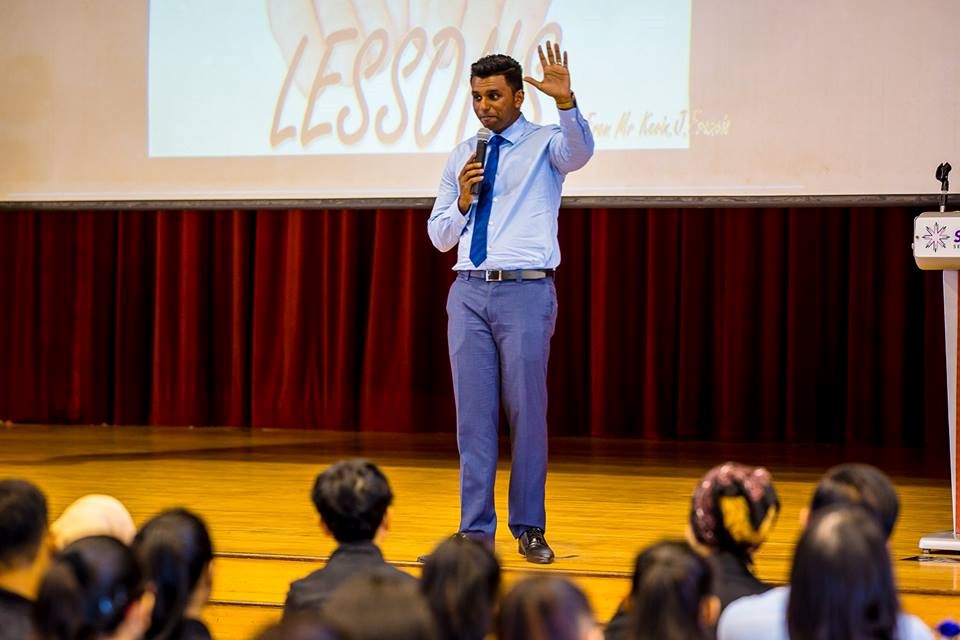Ms Lee Mei Yan Grace, Queensway Secondary School, Outstanding Youth in Education Award 2022
Tell us a story that captures the kind of teacher you are.
I once started a lesson with a screenshot of a spam message that I had received, telling me that I had won a million dollars. A student asked, “’Cher, are you trying to scam us?”
“That’s a good question,” I replied. “Why do you say that?”
The lesson was about analysing the reliability of a source, and my student had unknowingly put the skill into practice by questioning the intent behind the source.
Another time, I faced a different question as I walked into class: “Hasn’t the Cold War ended?”
The news of the crisis in Ukraine had broken the day before, and my students were referencing TikTok videos that they had seen. I asked my students in return, “How do you think this links to what we have just learnt about the Cold War?”
Many students have the initial impression that History and Social Studies are boring disciplines. They find it difficult to see the applicability of the Humanities in their lives. So, instead of delivering heavy content lectures, I ask students questions to pique their curiosity and engage them in discussions, so they reflect on their understanding of issues. I am determined to show my class how the source reading skills they acquire are relevant to their life, and useful beyond the examinations.
“Everyone can learn from a textbook, but the ability to ask questions and make sense of information will help my students thrive in the future.”
Ms Lee Mei Yan Grace
I start lessons each week with a short current affairs segment. I challenge my students to read the news and guide them to draw connections with what they are learning in our subject. For instance, we have discussed the history of the crisis in Ukraine, how it has impacted our daily lives and about Singapore’s relationships with other countries. From the various topics that come up, we have talked about the history and impact of pandemics, world politics and changes in Singapore’s political and physical landscape.
These discussions have piqued the students’ interest in the world around them. I really felt this when during the crisis in Afghanistan last year, two students put together a deck of slides to share what they had learnt with their class. No one had asked them to do this. They took the initiative to find out more and raised many questions about the impact of the crisis on Singapore and the world. I felt so proud of them.
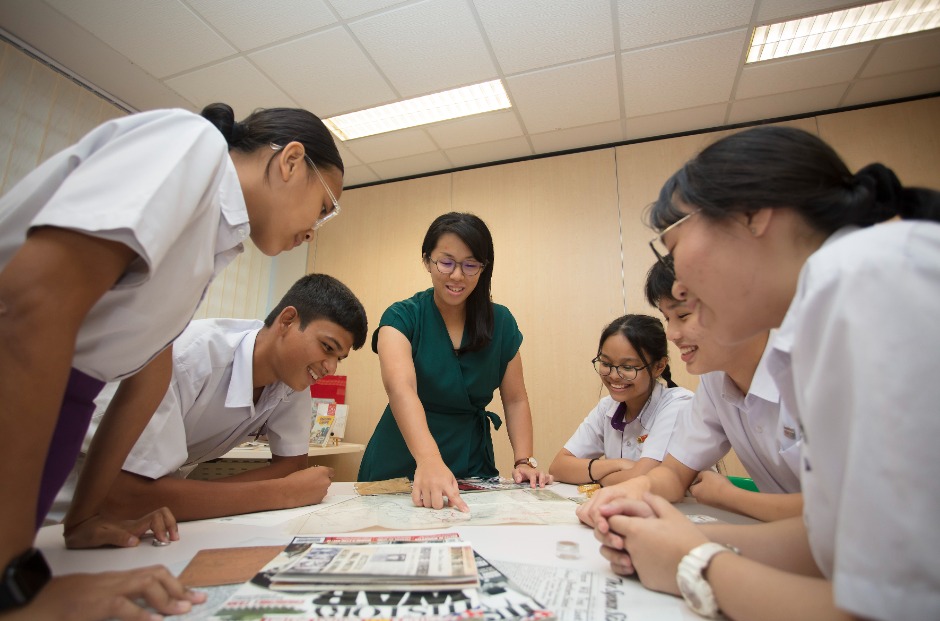
Discussing current affairs.
Everyone can learn from a textbook, but the ability to ask questions and make sense of information will help my students thrive in the future. I want to cultivate a sense of curiosity in their lives, so they continue to explore complex ideas and ask critical questions. This is the basis of true understanding.
Creating platforms for students’ voices
Let me share an example.
“I have heard racist comments before.”
I flashed this statement on-screen for a Social Studies lesson and got students to say Yes or No via their Personal Learning Devices (PLDs). I was using an interactive presentation tool called Pear Deck, and the students’ responses were anonymised with generic graphics.
My next question: “What are some of these comments, and why do you think the person made these comments?”
My students looked at each other nervously.
I dived in deeper with my next question on the slide.
“Share an incident where you have heard or seen racist comments and actions.”
Students typed their responses in short paragraphs, and I assured them that the classroom was a safe environment to share their thoughts.
“Interactive tools like this give each student a voice. It encourages even the shy ones to contribute.”
I displayed selected answers on the classroom projector and then steered a discussion on this very sensitive issue. The anonymity of the comments on the slide encouraged students to share their thoughts – hesitantly at first and then with more confidence as others spoke up. We were able to have an honest and much-needed conversation on this very relevant topic.
Interactive tools like this give each student a voice. It encourages even the shy ones to contribute. For instance, in the lesson mentioned above, a student, who has mild autism, wrote that he had faced unkind comments from classmates about his mannerisms. He often spoke at an increased volume and avoided eye contact.
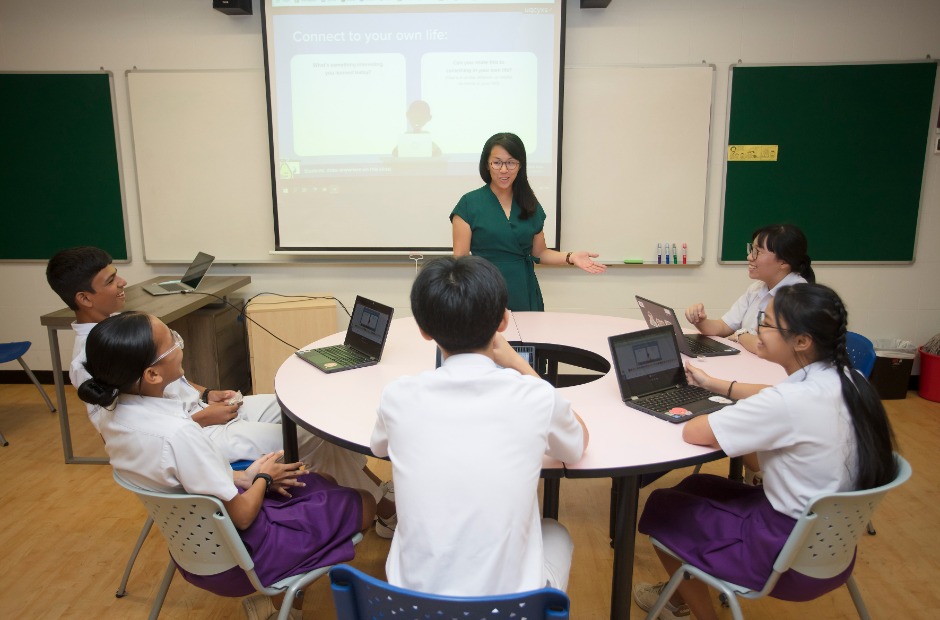 Using digital interactive tools to facilitate classroom discussions
Using digital interactive tools to facilitate classroom discussions
This student would likely never have said this aloud but the option to write about his feelings made it easier for him to share. This comment led to a discussion about the causes and symptoms of autism, with each student using the interactive tool to share their thoughts and questions. Through this process, the class understood their peer at a deeper level and how their words had caused hurt. This digital interaction facilitates the start of a difficult conversation but once students are comfortable sharing, they will speak up and we will end the session with a common understanding as a class.
Apart from discussions, my students have shared that when we use interactive tools, they feel more engaged during lessons. I can see what they are working on in real-time and can comment on their work. The multiple check-ins during lessons help them to stay focused and I can also differentiate my instruction for each student according to their learning needs. Teachers can also easily send around the deck of slides, with everyone’s responses, to each student after the lesson. This helps them to revisit and review the content covered in class.
Which school project or initiative are you especially proud of?
As the acting Subject Head of the Student Leadership Development Committee (SLDC), I hold the work of developing our students into leaders close to my heart.
At Queensway, we aim to give every student the opportunity to lead their peers in some capacity at least once in their secondary school journey as we believe that every student has this potential. I was a student leader myself and I felt the importance of having such opportunities at this stage of life.
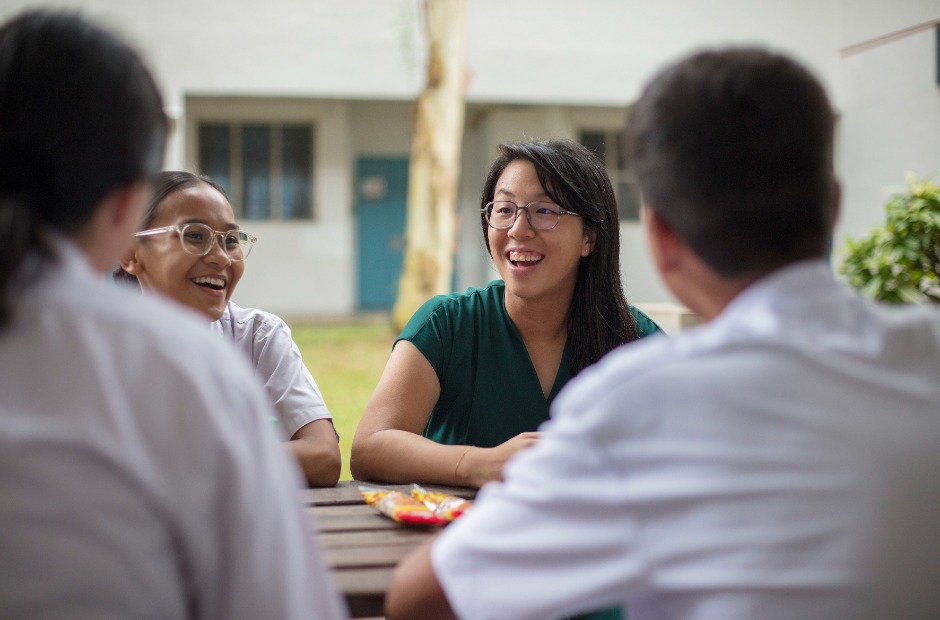 Developing Peer Support Leaders.
Developing Peer Support Leaders.
I am most encouraged when students step up to plan and lead school-wide activities. These include the annual Head Prefect Election, Mental Wellness Week, and various training programmes and day camps. The activities equip student leaders with facilitation skills and project management knowledge. Beyond the skills they acquire, students also grow in character as they put their leadership skills and values into practice.
For example, addressing mental health issues can be daunting, and requires our students to create a network of support for their peers. A particular group that we have worked towards building up is the Peer Support Leaders (PSLs) Board. These are students, who are trained by teachers and counsellors to educate their peers on coping with stress. This could be about being aware of signs of distress in themselves and in their peers and knowing where to seek help in and beyond their social circles.
The PSLs then guide the Peer Support Champions (PSCs) to bring classmates together through class cohesion activities and provide care for peers facing emotional and academic challenges.
PSCs also initiate conversations on mental wellness, so that this is not seen as a taboo subject, and students are more comfortable to talk about their feelings and seek help when needed. This network of leaders is able to make a difference to their peers in each class and across the school.
I enjoy working with the PSLs as they train their peers and plan activities. A highlight was Mental Wellness Week when students delivered lessons on mental health to the entire school. They organised a treasure hunt to create a sense of togetherness between classes. Students went around to find motivational quotes that had been designed and placed all around the school by the PSLs. They also filmed short videos to share tips about mental wellness. Currently, they are planning an anti-bullying campaign.
Another highlight was guiding a student representative, who was to take part in a dialogue with Minister for Education Chan Chun Sing on mental health. She was able to speak confidently about the challenges she faced as a youth and shared enthusiastically about the efforts of the PSLs.



